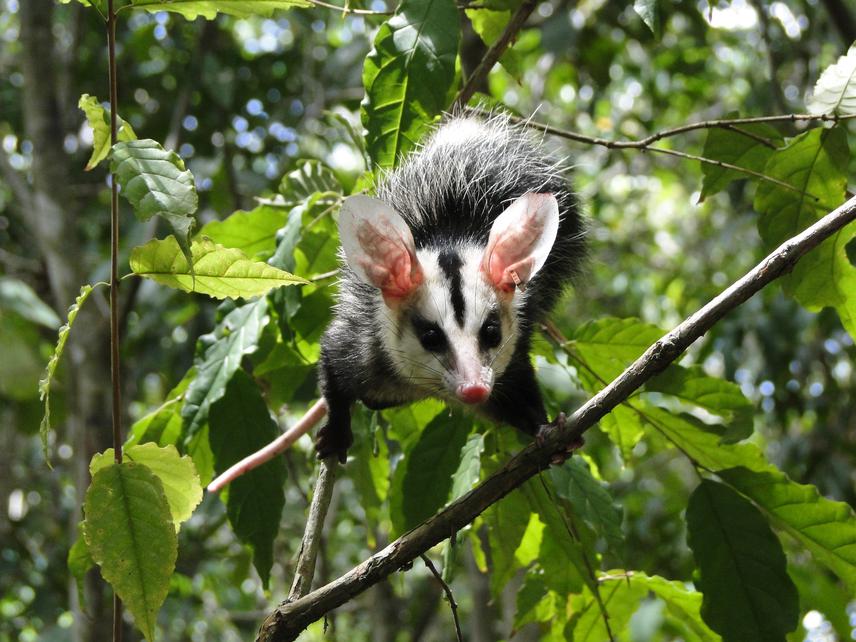Social media video featuring the project.
Mammals of the Atlantic Forest and Sugarcane in Northeastern Brazil
20 Dec 2016 Rebio Guaribas, Brazil, Central and Latin America Mammals | Biodiversity | Habitats
Space use, population size and permeability of the sugarcane matrix of the carnivorans and small mammals’ communities affected by sugarcane plantations.

Didelphis albiventris.
Northeast Atlantic Forest has been lost to plantations, especially sugarcane. Little is known about the carnivorans in this region of the Brazil, and there is insufficient data to predict future conservation actions or sustainability status. Carnivore species are more prone to suffer the consequences of these anthropogenic impacts, due to the need of large home range areas, along with naturally low population densities and intrinsic growth rates. Some rodents and marsupials in forest remnants present low dispersal rates, indicating the occurrence of isolated populations. The habitat of these taxa is undergoing rapid conversion for the agroecosystems areas, and it is essential to determine the influence of this commercial development before it is too late. On the other hand, some wildlife populations appear to benefit from intensive agriculture. In this sense, some issues form the basis in understanding the influence that the monoculture of sugarcane has on small mammals and carnivores communities: the sugarcane matrix is a barrier for some species? What are the most vulnerable species and that most favor the sugarcane environment? How the pre-harvest fire of the sugarcane changes the dynamics of populations in adjacent areas of the Atlantic Forest? How long is the recolonization period of communities in environments of sugarcane after the plantation?
Our goal is to analyze how the sugarcane matrix influence small mammals and carnivore’s community’s structure, space use, population’s size and permeability of the sugarcane matrix. The study will be developed in mosaic areas of sugarcane monoculture and Atlantic Forest. Carnivores will have the activity pattern and the richness parameters, relative abundance and composition registered by footprint traps, camera traps and galvanized boxes and small mammals by live-traps and pitfall traps. Identifying explicit risks imposed upon the high profile will draw attention to species and habitat issues, while generating data useful in creating effective management plans. At the end of the study, we expect to get a list of faunal composition and spatial distribution of these mammals. In addition, the understanding of the effects of sugarcane monoculture for connectivity of forest remaining is indispensable for development planning conservation strategies for different species, such as ecological corridors.
Social media video featuring the project.
Mammals of the Atlantic Forest and Sugarcane in Northeastern Brazil